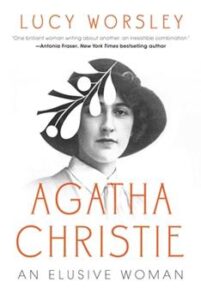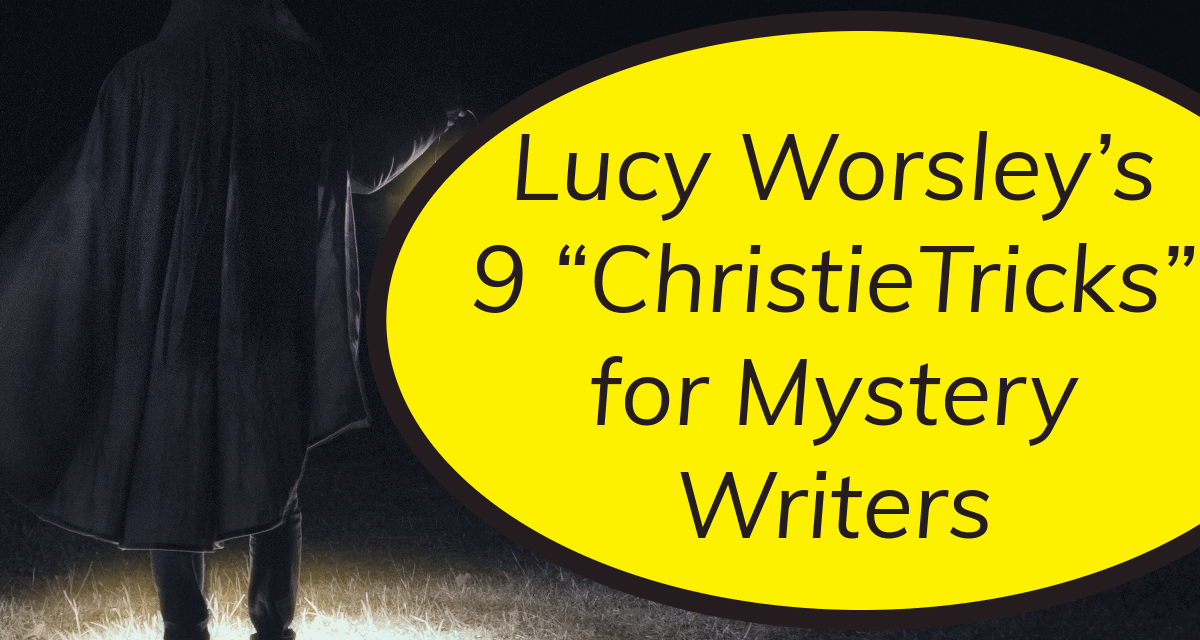Recently I read Agatha Christie: An Elusive Woman by Lucy Worsley, who in case you don’t know is a royal curator, historian, TV broadcaster, and bestselling author. She exhibits remarkably good humor while obviously being extremely smart and busy.
 Her book’s subject, Agatha Christie, has critics and detractors—some justified—but it cannot be argued that Dame Agatha is the bestselling novelist of all time. Even so, Christie once said, “I don’t like describing people or places. I just want to get on with the dialogue.” This sort of talk did not endear her to critics or snobs. Readers felt otherwise, and it may be the rock-solid underpinnings of her plots that have allowed her novels to be translated into countless languages and enjoyed across the globe.
Her book’s subject, Agatha Christie, has critics and detractors—some justified—but it cannot be argued that Dame Agatha is the bestselling novelist of all time. Even so, Christie once said, “I don’t like describing people or places. I just want to get on with the dialogue.” This sort of talk did not endear her to critics or snobs. Readers felt otherwise, and it may be the rock-solid underpinnings of her plots that have allowed her novels to be translated into countless languages and enjoyed across the globe.
In Worsley’s riveting biography, she takes readers behind the scenes to reveal the mystery author’s characteristic “Christie Tricks.” And with kind permission from Pegasus Books, I share with you Dame Agatha’s clever literary ploys.
The Mysterious Affair at Styles, Christie’s first big hit, contains a classic Christie trick. Neat-freak detective Poirot notices when objects on a mantlepiece are out of line: a key document has been clumsily placed in a jar for lighting a fire.
Christie Trick #1: Hide an object in plain sight
This trick has strong roots in the mystery tradition. In Edgar Allan Poe’s “The Purloined Letter,” considered one of the first detective stories, an all-important blackmail letter is similarly located by detective C. Auguste Dupin, clearly evident to the discerning eye.
In Christie’s Murder in Mesopotamia, an archaeologist is looking over stones, broken pottery, “big things called querns, and pestles and celts and stone axes.” Only the vigilant reader might take note of the unusual word “quern”—and indeed yes, this stone hand mill turns out to be the murder weapon.
Christie Trick #2: The hidden couple
In The Mysterious Affair at Styles, two adulterous murderers disguise their relationship with a show of active dislike. It doesn’t help that they’re both described in the text as nonsexual frumps. It turns out that many characters in this Christie novel are hiding their true selves beneath a veneer of normalcy.
Most people have secrets. Mystery writers are well-advised to familiarize themselves with their characters’ secrets, which may even include one or two unexpected alliances.
Christie Trick #3: Authors should play fair with their readers
Many victims in Christie’s novels are poisoned. Christie, having been trained as a chemist when she was a young woman, knew just how to do it. “Mysterious poisons unknown to science” were not used in her books. Maybe this is a rule rather than a trick, but a story’s clues are to be based in reality, and readers are expected to have a sporting chance of solving the crime.
For example, in a locked room mystery it would be disappointing for readers to learn in the end that a helicopter flew into the courtyard and took away the actual villain.
Readers are bummed out when they close a book and realize the mystery’s solution was impossible to figure out.
Christie Trick #5: The omission of tiny but key facts by someone we trust
This may be bending the above #4, and Christie did it in numerous books—most famously in The Murder of Roger Ackroyd. Without giving too much away of that plot if you haven’t read it, Christie walks a fine line there. Even so, she has stated of the story, “there’s lack of explanation there, but no false statements.”
The lesson: writers and readers should suspect everyone.
Christie Trick #6: Clothes do not make the man
Appearances can be deliberately deceiving, and characters may jump to conclusions based on a character’s attire—as happens to Virginia in The Secret of Chimneys.
Some assumptions made by characters in Christie stories may strike modern readers as problematic, as uniformed or lower classes can be dismissed as less than people. Not to excuse it, but Christie was describing the world and the attitudes in which she and her characters lived.
If today’s writers turn a lens upon our society, one might expect they could people their books with folks who make similarly imprudent assumptions based upon appearances. Certainly ageism is as present today as it was when Christie wrote Murder is Easy. In that novel, a retired policeman connects more to a twenty-something female than another woman whom he thinks of as “an old lady”—she’s actually right about his age, the dope.
Misguided characters can misdirect readers.
Christie Trick #7: Crime patterns may fool detectives
In The ABC Murders, the slayings are erroneously thought to be alphabetically linked. The trick of this early serial killer novel is that the public-facing sensational nature of a crime spree disguises a more targeted domestic killing.
It takes an especially cruel and maniacal killer to hide their intended victim in a pile of bodies.
Christie Trick #8: Steal from the news
Of course Murder on the Orient Express has a luxurious and exotic setting for readers to enjoy, but the murder plot actually has its disturbing roots in a news story that terrorized America: the Lindbergh baby kidnapping. That’s what drove the revenge killing at the heart of this incredible novel.
Christie’s novel Destination Unknown also features scientists and spies not unlike those found in a scandal during the time the novel was written.
Christie Trick #9: Set the crime in a place familiar to you
In her book Dead Man’s Folly, Christie used her own boathouse as the scene of the crime. Five Little Pigs featured her gardens at her house Greenway. Active use of this Christie trick might make the case that all mystery writers are repressed killers.
When researching her novel, A Murder is Announced, Christie lured unwitting neighbors into her drawing room, turned off the lights, then asked them to describe what they saw. Their answers were important to her finished book.
Mystery writers: look around for a good murder site.
Tell us on Facebook how you’ve been tricked by a mystery author. Better yet, share on Facebook how you’ve tricked your readers.





